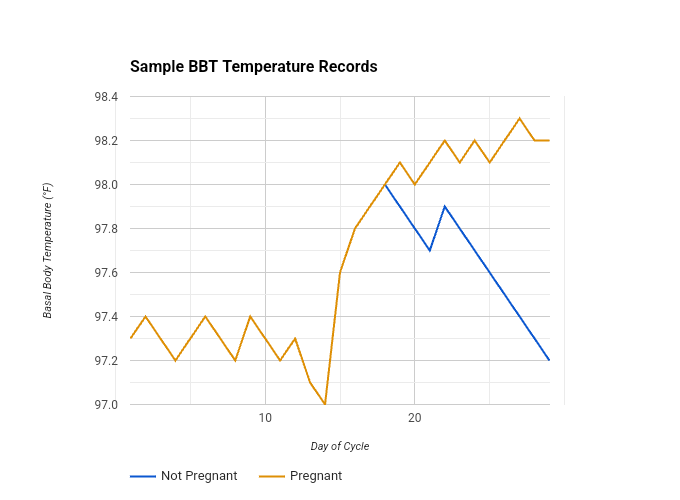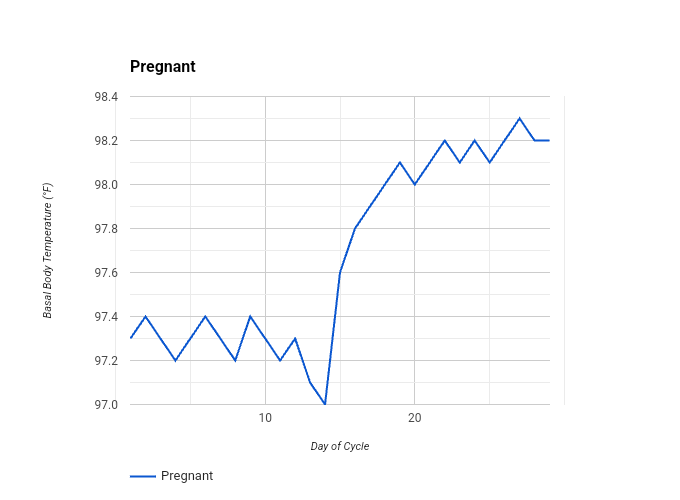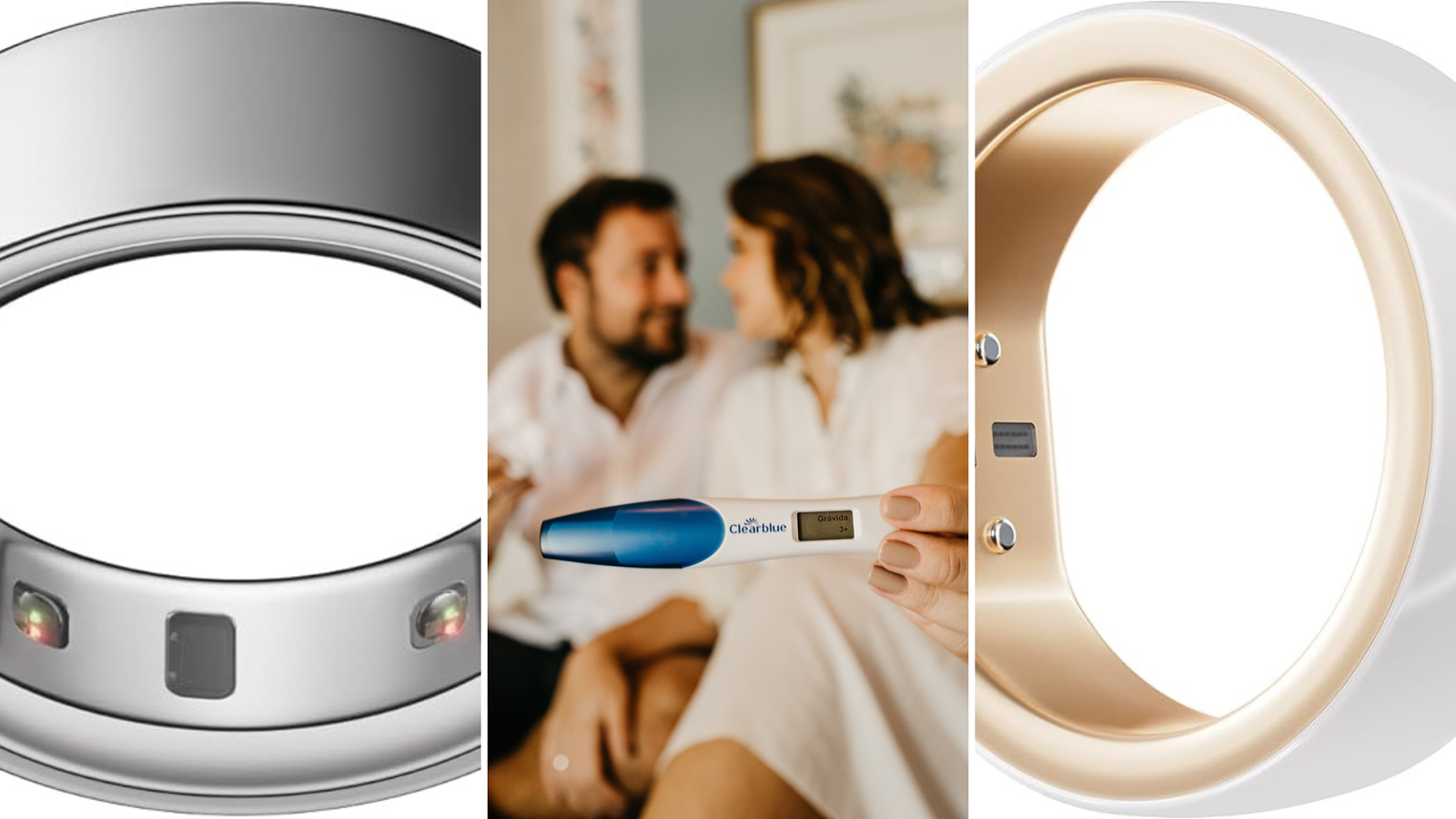Tracking basal body temperature (BBT) is a powerful tool for understanding your menstrual cycle and identifying signs of ovulation. For women trying to conceive or avoid pregnancy, charting BBT can provide crucial insights. In particular, comparing BBT charts for pregnant versus not pregnant cycles reveals distinct patterns that can help predict pregnancy.
This article explores how to interpret these charts, highlighting key differences and what they mean for your fertility journey. Whether you’re hoping to confirm early pregnancy or understand your cycle better, understanding BBT can offer valuable clarity.
What is Basal Body Temperature?
Basal body temperature (BBT) is your body’s lowest temperature in a 24-hour period, typically measured immediately after waking and before any physical activity. It’s often used to track ovulation and fertility patterns.
How to Take Your Basal Body Temperature
- Use a Basal Thermometer: A digital or mercury thermometer specifically designed for BBT.
- Consistent Timing: Take your temperature at the same time every morning before getting out of bed.
- Oral, Vaginal, or Rectal: Choose one method and stick with it for consistency.
- Record Daily: Keep a daily log or use an app to track your readings.
How to Use BBT to Confirm Ovulation
- Track Daily Temperatures: Chart your BBT every day.
- Identify Patterns: Look for a slight drop followed by a significant rise in temperature (0.5-1 degree Fahrenheit) which indicates ovulation.
- Post-Ovulation Rise: BBT remains elevated after ovulation due to increased progesterone.
Examples:
Here are two samples of basal body temperature records for pregnant and not pregnant cycles.
Cycle: Not Pregnant
| Day | Temperature (°F) |
|---|---|
| 1 | 97.3 |
| 2 | 97.4 |
| 3 | 97.3 |
| 4 | 97.2 |
| 5 | 97.3 |
| 6 | 97.4 |
| 7 | 97.3 |
| 8 | 97.2 |
| 9 | 97.4 |
| 10 | 97.3 |
| 11 | 97.2 |
| 12 | 97.3 |
| 13 | 97.1 |
| 14 | 97.0 (Ovulation) |
| 15 | 97.6 |
| 16 | 97.8 |
| 17 | 97.9 |
| 18 | 98.0 |
| 19 | 97.9 |
| 20 | 97.8 |
| 21 | 97.7 |
| 22 | 97.9 |
| 23 | 97.8 |
| 24 | 97.7 |
| 25 | 97.6 |
| 26 | 97.5 |
| 27 | 97.4 |
| 28 | 97.3 |
| 29 | 97.2 |
Cycle: Pregnant
| Day | Temperature (°F) |
|---|---|
| 1 | 97.3 |
| 2 | 97.4 |
| 3 | 97.3 |
| 4 | 97.2 |
| 5 | 97.3 |
| 6 | 97.4 |
| 7 | 97.3 |
| 8 | 97.2 |
| 9 | 97.4 |
| 10 | 97.3 |
| 11 | 97.2 |
| 12 | 97.3 |
| 13 | 97.1 |
| 14 | 97.0 (Ovulation) |
| 15 | 97.6 |
| 16 | 97.8 |
| 17 | 97.9 |
| 18 | 98.0 |
| 19 | 98.1 |
| 20 | 98.0 |
| 21 | 98.1 |
| 22 | 98.2 |
| 23 | 98.1 |
| 24 | 98.2 |
| 25 | 98.1 |
| 26 | 98.2 |
| 27 | 98.3 |
| 28 | 98.2 |
| 29 | 98.2 |
Interpretation: in the pregnant cycle, the BBT remains elevated for more than 18 days post-ovulation, indicating the sustained presence of progesterone. In the non-pregnant cycle, the BBT drops back to the pre-ovulation range just before or during menstruation.
Basal Body Temperature Chart: Pregnant vs. Not Pregnant

- Pregnant: BBT stays elevated (above the coverline) for more than 18 days.
- Not Pregnant: BBT drops back to the pre-ovulation range just before or during menstruation.
What Should Basal Temperature Be If Not Pregnant?

- Follicular Phase (Pre-Ovulation): Typically 97.0°F to 97.7°F (36.1°C to 36.5°C).
- Luteal Phase (Post-Ovulation): Typically 97.8°F to 98.6°F (36.6°C to 37.0°C).
What Should Your Basal Temperature Be to Get Pregnant?

- Ovulation: Look for a temperature spike indicating ovulation. Aim for timing intercourse around this spike.
- Luteal Phase: Temperatures should be consistently higher than the follicular phase.
How Long Does BBT Stay Elevated if Pregnant?
BBT typically remains elevated throughout pregnancy due to sustained high levels of progesterone.
Can You Be Pregnant Without a Temperature Rise?
Unusually, yes. Some women might not experience a noticeable rise in BBT due to various factors, but it’s uncommon.
How Do I Check if I Am Pregnant Naturally?
- Missed Period: One of the first and most obvious signs.
- Basal Body Temperature: Elevated BBT for more than 18 days post-ovulation.
- Physical Symptoms: Nausea, breast tenderness, fatigue.
- Home Pregnancy Test: Reliable and accessible way to confirm pregnancy.
How to Tell if You’re Pregnant Early On?
Early signs of pregnancy can include a missed period, nausea, breast tenderness, fatigue, frequent urination, and mild cramping. Some women also notice changes in their sense of smell or taste and increased basal body temperature.
What is the Fastest Way to Know if You Are Pregnant?
The fastest way to know if you are pregnant is to take a home pregnancy test. These tests can detect the pregnancy hormone (hCG) in your urine as early as a few days before your missed period.
How Can I Check if I Am Pregnant Without a Test?
While a pregnancy test is the most reliable method, early pregnancy signs can give clues. These include a missed period, breast changes, fatigue, nausea, and increased urination. Tracking your basal body temperature with thermometer for consistent elevation can also be indicative.
What is the First Thing You Notice if You Are Pregnant?
The first noticeable sign of pregnancy is usually a missed period. Other early symptoms may include breast tenderness, nausea, and fatigue.
What Symptoms Do You Have at 1 Week Pregnant?
At 1 week pregnant (which is actually the first week of your menstrual cycle), there are typically no symptoms of pregnancy. Any signs of pregnancy usually start to appear around weeks 4-6, such as fatigue, nausea, and breast tenderness.
How Many Days to Confirm Pregnancy?
Pregnancy can usually be confirmed with a home pregnancy test about 10-14 days after conception, often around the time of your missed period. Blood tests conducted by a healthcare provider can confirm pregnancy even earlier, about 6-8 days after ovulation.
What Are the Signs That I’m Not Pregnant?
Signs that you might not be pregnant include the onset of your menstrual period, a negative pregnancy test, and the absence of pregnancy symptoms such as nausea, breast tenderness, and fatigue.
How to Check Pregnancy at Home by Touching the Stomach?
Checking for pregnancy by touching the stomach is not a reliable method. Early pregnancy changes in the uterus are internal and not typically detectable by touch. For accurate confirmation, use a pregnancy test or consult a healthcare provider.
For details, check out this article on how to check basal body temperature without thermometer.
What is the First Feeling When You Get Pregnant?
The first feelings when you get pregnant can vary but often include mild cramping, breast tenderness, fatigue, and nausea. Some women also report a heightened sense of smell or taste changes.
What is the Maximum Delay in Periods if Not Pregnant?
A menstrual period can be delayed for various reasons other than pregnancy, such as stress, hormonal imbalances, changes in weight, or underlying medical conditions. A delay of up to a week is generally considered normal, but longer delays should be discussed with a healthcare provider.
Conclusion
Understanding and charting your basal body temperature is an invaluable practice for anyone monitoring their fertility or trying to conceive.
By recognizing the distinct patterns in BBT charts between pregnant and non-pregnant cycles, you can gain clearer insights into your body’s natural rhythms.
While BBT tracking requires consistency and patience, the benefits are significant, offering a non-invasive, cost-effective method to enhance your reproductive awareness.
Whether you’re aiming to confirm pregnancy or simply gain a better understanding of your menstrual cycle, BBT charting can provide the essential information needed to make informed decisions about your reproductive health.
Tools:
- Luteal phase calculator
- BBT Temperature Converter
- Birth control calculator
- Bishop Score Calculator
- Due Date Calculator
- Breast Cancer Recurrence Risk Calculator
- Breastfeeding Calories Calculator
- Clomid Ovulation Calculator
- Conception Calculator
- Due Date Calculator
- Egg Freezing Calculator
- Flange Size Calculator
- Ideal Weight To Get Pregnant Calculator
- Implantation calculator
- IVF success calculator after retrieval
- Menstrual or Implantation Bleeding Quiz
- MCA PSV MoM calculator
- hCG Levels Calculator
- IVF Due Date Calculator
- Who Got Me Pregnant Calculator
- Conception Calculator
- Pearl Index Calculator
- Flange Size Calculator
- Period Calculator
- TIRADS Calculator
- Egg Freezing Calculator
- Fundal Height Calculator
- Pregnancy Weight Gain Calculator
- Chances of Having Twins Calculator
- VTE Risk Score Calculator
Reference
- Steward K, Raja A. Physiology, Ovulation And Basal Body Temperature. [Updated 2023 Jul 17]. In: StatPearls [Internet]. Treasure Island (FL): StatPearls Publishing; 2024 Jan-. Available from: https://www.ncbi.nlm.nih.gov/books/NBK546686/
- Grant A, Smarr B. Feasibility of continuous distal body temperature for passive, early pregnancy detection. PLOS Digit Health. 2022 May 16;1(5):e0000034. doi: 10.1371/journal.pdig.0000034. PMID: 36812529; PMCID: PMC9931282.
- Yussman M.A. Taymor M.L Serum levels of FSH and LH and plasma progesterone related to ovulation by corpus luteum biopsy.J Clin Endocrinol Metab. 1970; 30: 396
- Morris N, Underwood L, Easterling W Jr. Temporal relationship between basal body temperature nadir and luteinizing hormone surge in normal women. Fertil Steril. 1976 Jul;27(7):780-3. PMID: 950047.




